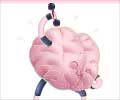A study by researchers from Denmark and The Netherlands has found that the brain, just like muscles, works harder during strenuous exercise and is fuelled by lactate, rather than glucose.
A study by researchers from Denmark and The Netherlands has found that the brain, just like muscles, works harder during strenuous exercise and is fuelled by lactate, rather than glucose.
According to the authors, not only does this finding help explain why the brain is able to work properly when the body’s demands for fuel and oxygen are highest, but it goes a step further to show that the brain actually shifts into a higher gear in terms of activity.This study opens doors to entirely new areas of brain research related to understanding lactate’s specific neurological effects.
"Now that we know the brain can run on lactate, so to speak, future studies should show us when to use lactate as part of a treatment," said Gerald Weissmann, MD, Editor-in-Chief of The FASEB Journal.
"From an evolutionary perspective, the result of this study is a no-brainer. Imagine what could have or did happen to all of the organisms that lost their wits along with their glucose when running from predators. They were obviously a light snack for the animals able to use lactate," Weissmann added.
For the study, researchers looked at research that compared the blood running to and from the heads of volunteers undergoing strenuous exercise.
They found that the blood on its way to the brain contained considerably more lactate than blood flowing from the brain.
Advertisement
In fact, the brain helped to clear lactate from the circulation, thereby leaving glucose to the muscles that need it for the hard work they were performing.
Advertisement
Source-ANI
RAS/L














